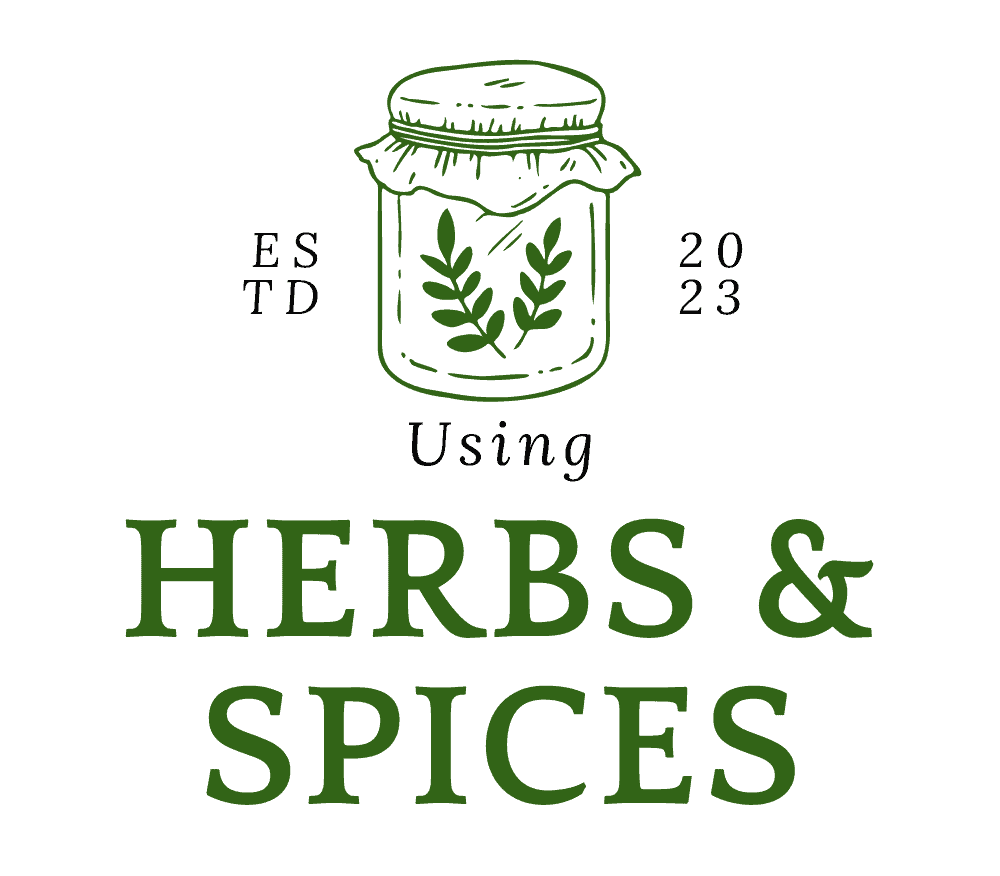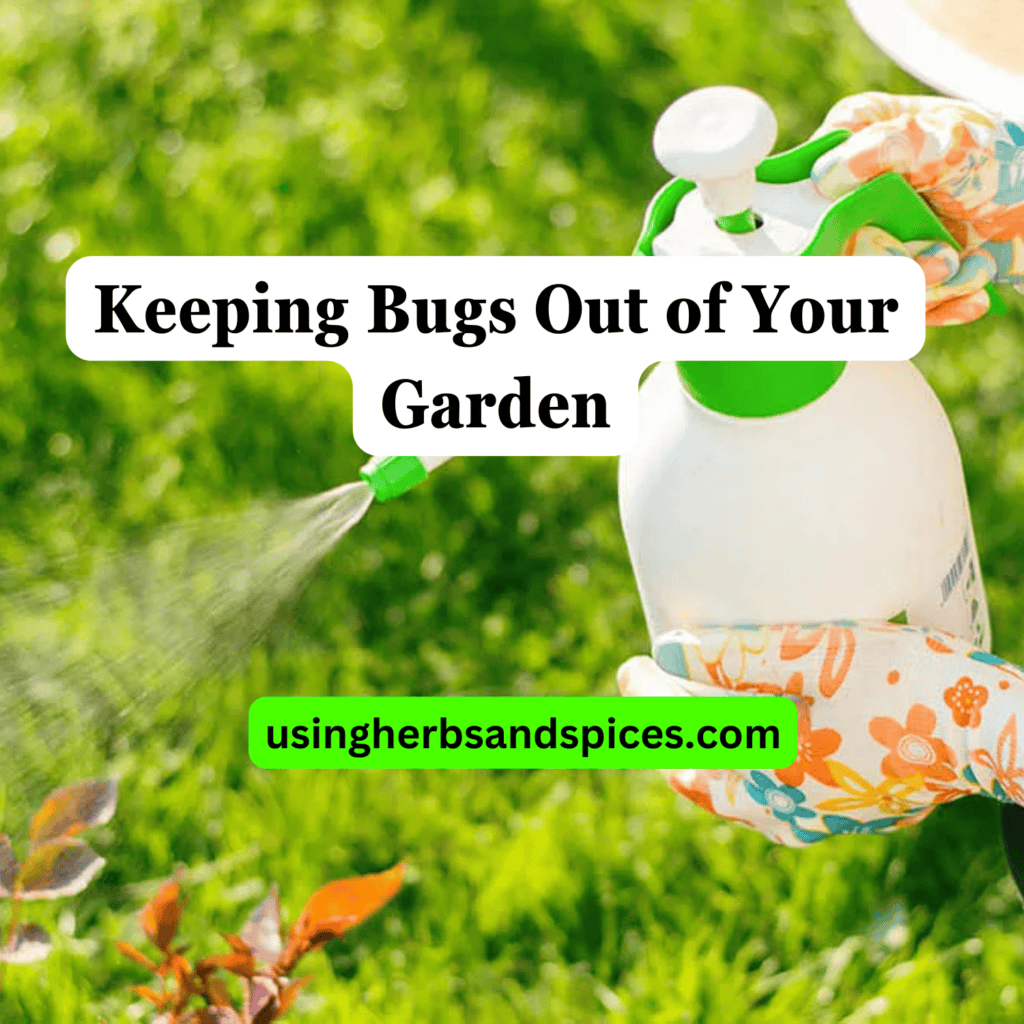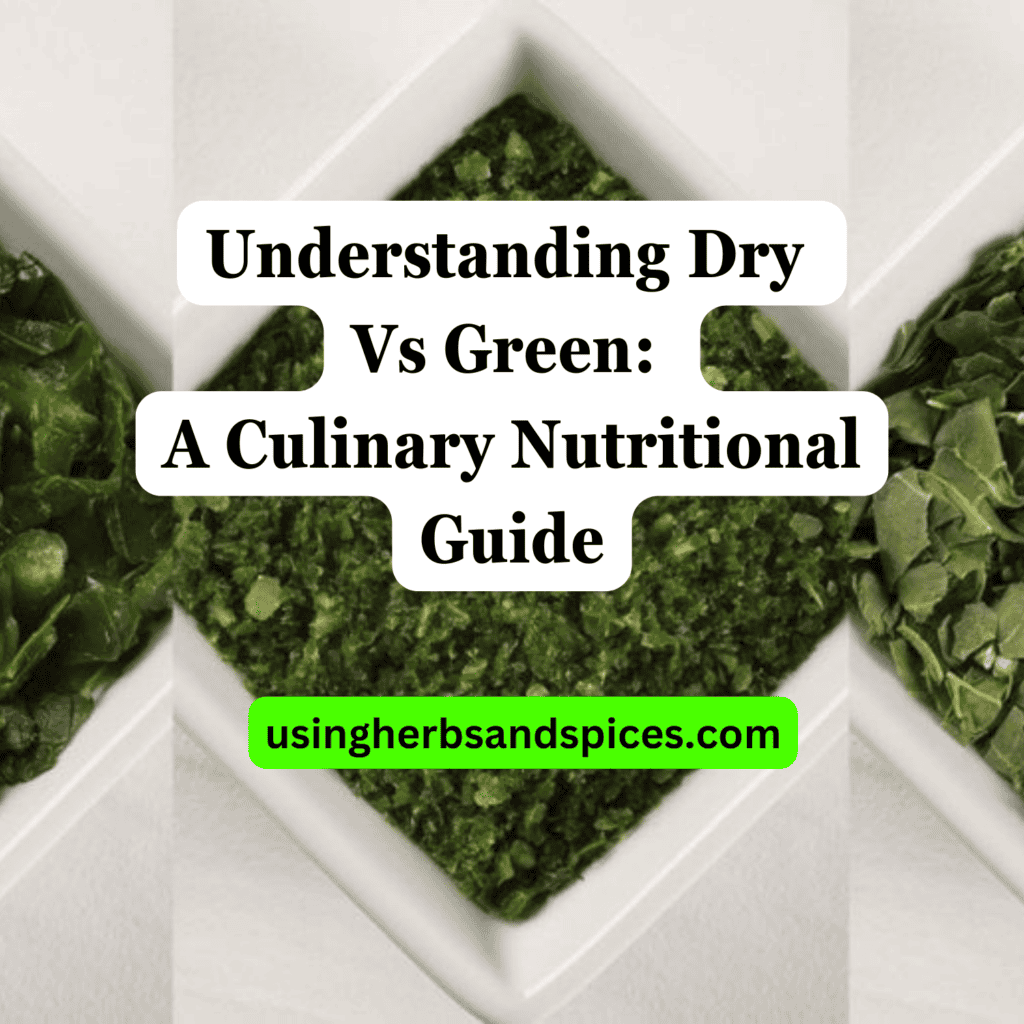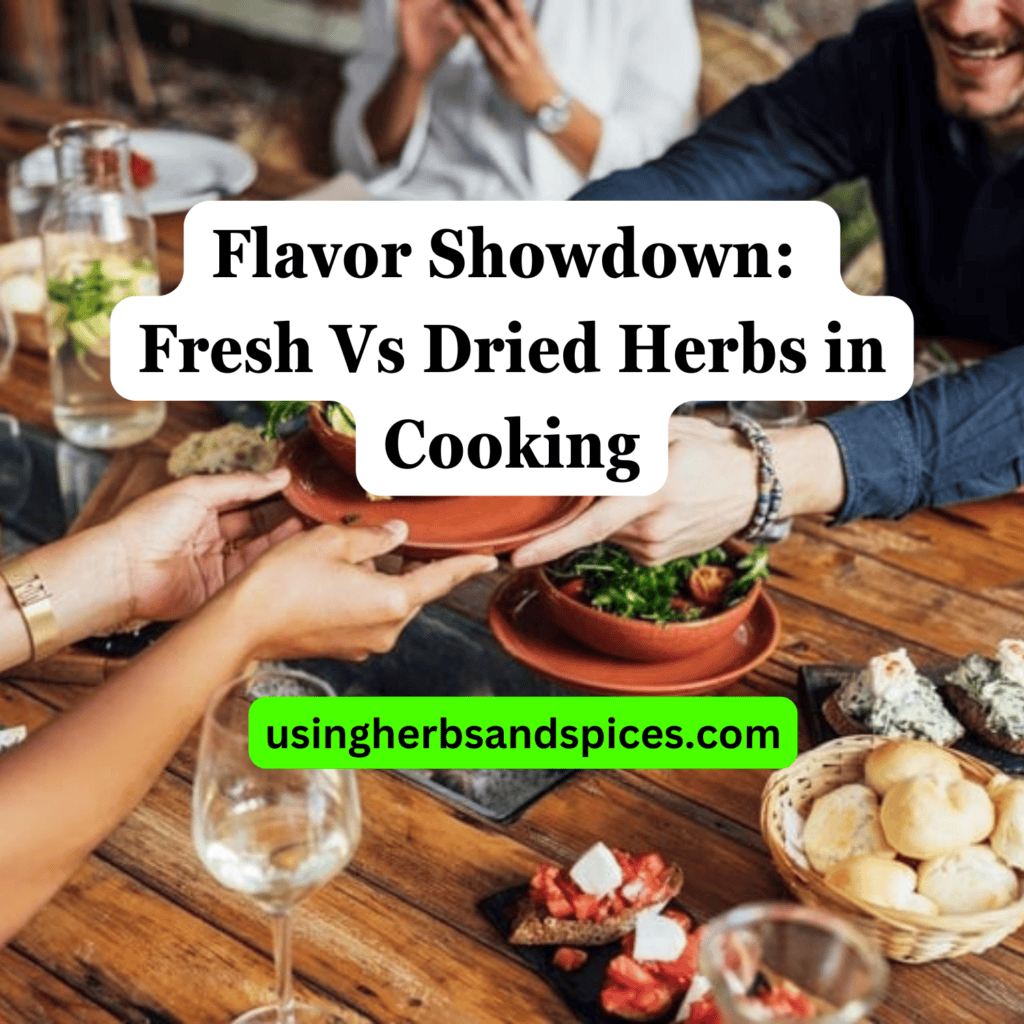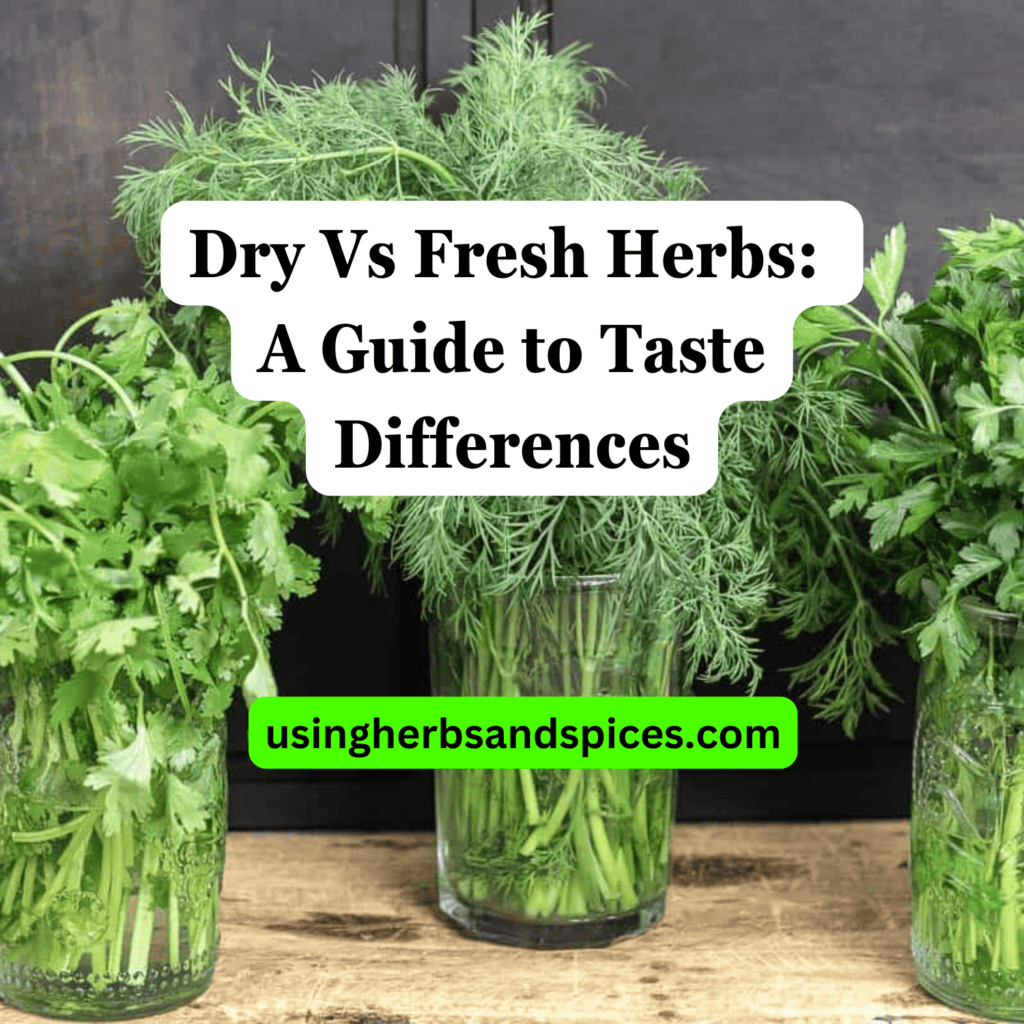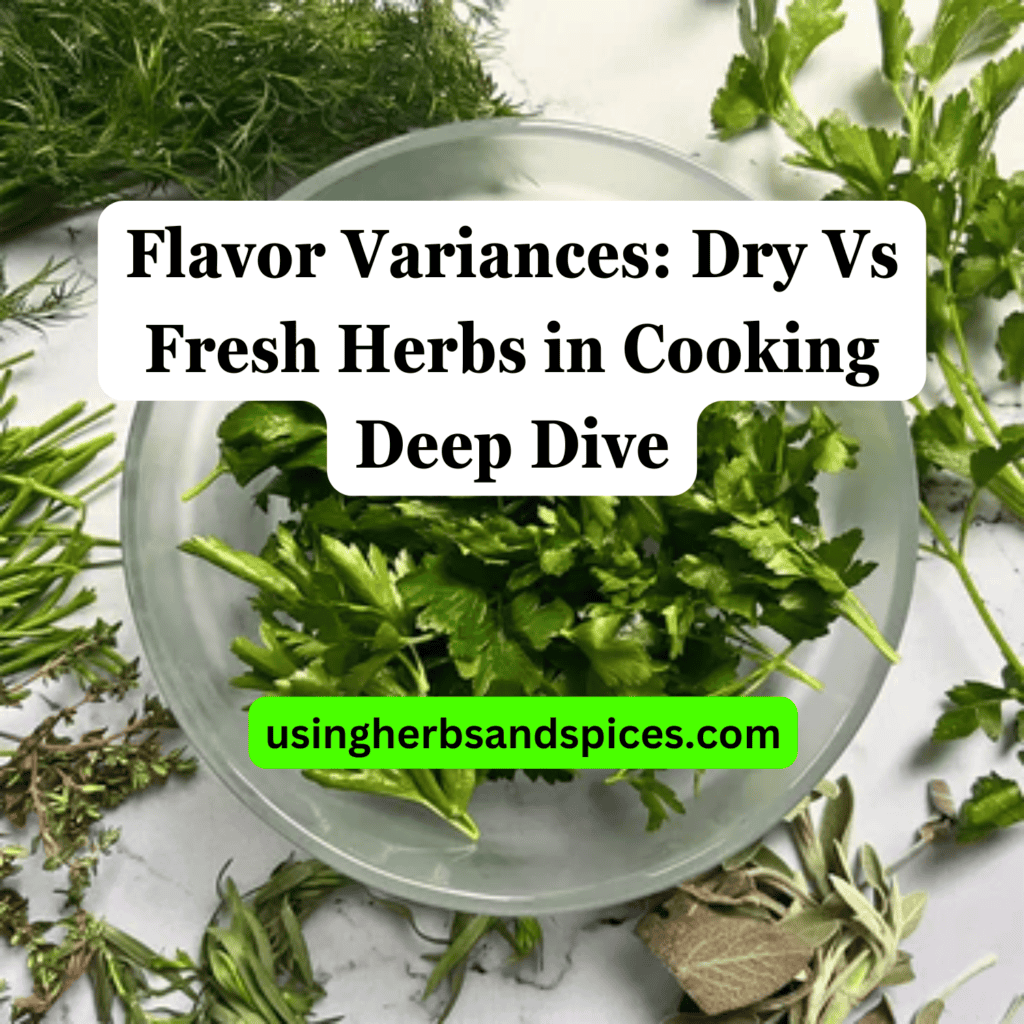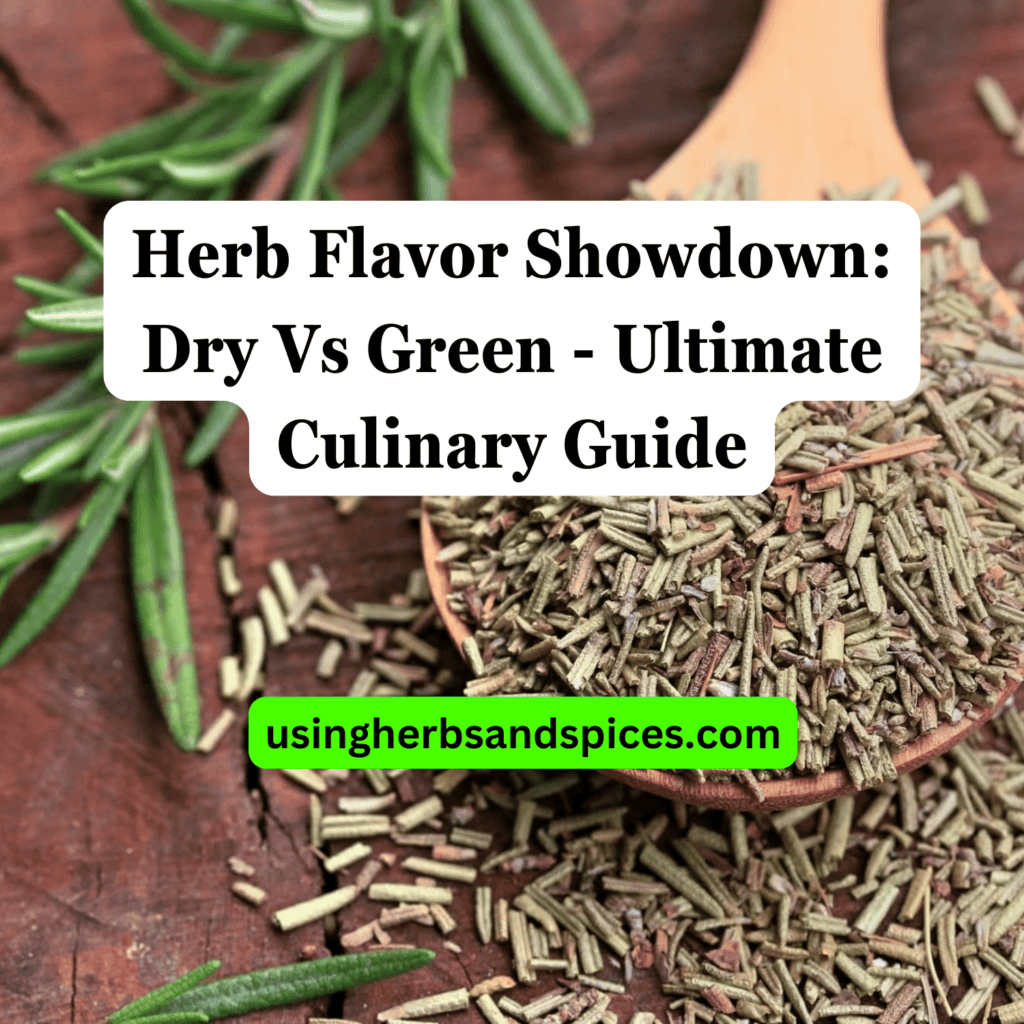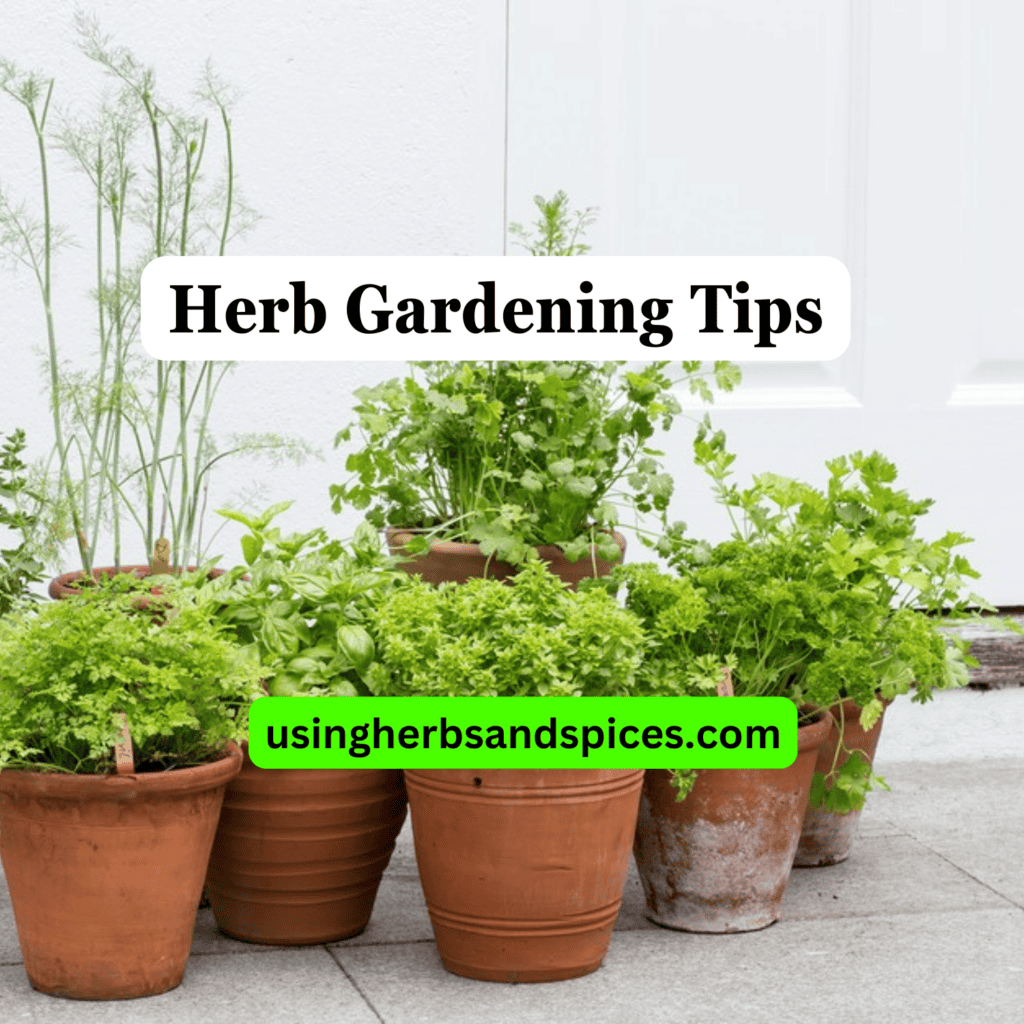SUMMARY: Fresh herbs add a vibrant flavor to dishes, but dried herbs offer a more concentrated taste, useful when fresh isn’t available. Knowing when and how to use each can elevate your cooking, especially with proper storage to maintain their potency.
Ever wondered why your homemade dishes lack the vibrant flavor of restaurant meals?
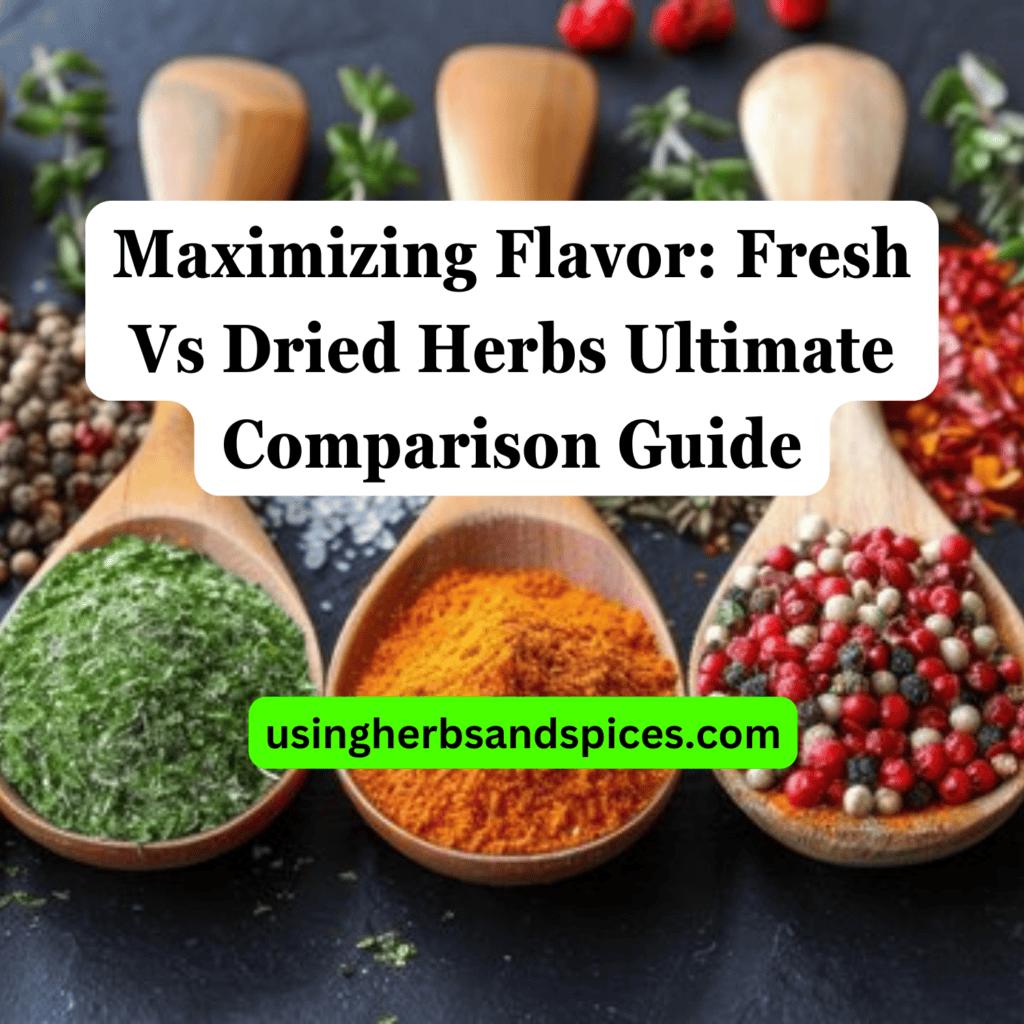
Finding the right herb can bridge that gap.
- Understanding the Fundamentals: Fresh Herbs vs. Dried Herbs
- Potency of Fresh Herbs Compared to Dried
- Guidelines for Substituting Fresh Herbs with Dried (And Vice Versa)
- Best Practices for Storing Fresh and Dried Herbs
Continue reading to unlock the secret to maximizing flavor in every dish you create.
Understanding the Fundamentals: Fresh Herbs vs. Dried Herbs
At the heart of any flavorful dish lies the careful selection between fresh and dried herbs. Fresh herbs, with their vibrant colors and aromatic profiles, often symbolize the essence of summer gardens, imparting a burst of freshness that’s hard to replicate. Conversely, dried herbs, known for their concentrated flavors and longer shelf life, offer a depth of taste that can profoundly impact a dish’s overall flavor profile. The choice between fresh and dried herbs can significantly affect the taste, aroma, and color of culinary creations. In recognizing their distinct characteristics, chefs and home cooks alike can harness the full potential of herbs to elevate their dishes to new heights.
Potency of Fresh Herbs Compared to Dried
The potency of herbs plays a crucial role in their application in culinary practices. A common misunderstanding is that fresh herbs and dried herbs can be used interchangeably in the same quantities. However, the process of drying herbs concentrates their flavors, making them significantly more potent than their fresh counterparts. For example, it is widely accepted that one tablespoon of fresh herbs equals approximately one teaspoon of dried herbs, although this can vary based on the herb type and the drying process.
The transformation from fresh to dried involves the removal of water, concentrating not just the flavor but also the essential oils responsible for the herb’s unique aroma and taste. This concentration can alter the herb’s character, sometimes enhancing certain flavor notes more than others. Moreover, some herbs, like basil and cilantro, lose a significant part of their essence during drying, which can result in a flavor profile that differs markedly from the fresh herb.
Understanding the potency difference is essential not just for achieving the desired flavor balance but also for maximizing the health benefits herbs can offer. While dried herbs possess concentrated nutrients, fresh herbs provide a different spectrum of vitamins and minerals in a less concentrated form. Considering these factors is key to making informed decisions on which form of herb to use in your cooking.
Guidelines for Substituting Fresh Herbs with Dried (And Vice Versa)
Substituting fresh herbs with dried ones, or the other way around, requires understanding the basic ratio and considerations that preserve the dish’s intended flavor. A general rule of thumb for substitution is to use one part dried herb for three parts fresh herb. This ratio accounts for the increased concentration of flavor in dried herbs due to the removal of moisture. However, this ratio might vary slightly depending on the specific herb’s potency and the dish’s cooking time.
For instance, robust herbs like rosemary, thyme, and oregano tend to retain their flavor well when dried and can be substituted relatively easily following the 1:3 ratio. On the other hand, more delicate herbs such as parsley, cilantro, and basil might lose some of their vibrant flavors when dried, making them less ideal for substitution in recipes where their fresh flavor is paramount.
When substituting dried herbs for fresh, it’s best to add them earlier in the cooking process. This gives the dried herbs more time to rehydrate and infuse the dish with their flavor. Conversely, fresh herbs are often added towards the end of cooking to preserve their flavor and color.
Regardless of the substitution, always taste and adjust the seasoning as necessary, since factors like the age of the dried herbs and personal preference can affect the outcome. Understanding these guidelines allows for flexibility in cooking, enabling the use of whatever form of herb is available without compromising the dish’s flavor.
Best Practices for Storing Fresh and Dried Herbs
Storing herbs properly is essential to maximizing their shelf life and preserving their flavor and aroma. Fresh herbs and dried herbs have different storage requirements to consider.
To store fresh herbs, treat them like a bouquet of flowers. Place the stems in a glass of water and cover the leaves with a loose plastic bag before refrigerating. This method works well for leafy herbs like parsley, cilantro, and basil. For herbs like rosemary, thyme, and oregano, wrapping them in a damp paper towel and placing them in a bag in the refrigerator is effective. Fresh herbs typically last a week or more when stored this way, although some herbs may last longer with proper care.
Dried herbs, on the other hand, should be stored in a cool, dark, and dry place to preserve their potency. An airtight container is ideal to prevent moisture from entering, which can lead to mold growth. Avoid storing herbs near the stove, where heat can cause them to lose their flavor more quickly. Properly stored dried herbs can last up to a year or more, but it’s good practice to replace your dried herbs annually to ensure the best flavor.
Regardless of whether you’re dealing with fresh or dried, always check for signs of spoilage like mold, off smells, or discoloration before use. By adhering to these best practices, you can enjoy the maximum flavor and potency from your herbs throughout their shelf life.
Fresh vs. Dried Herbs: Maximizing Flavor in Your Cooking
In summary, the choice between fresh and dried herbs is not merely a matter of availability but a conscious decision influenced by the desired potency and flavor profile in cooking.
- Fresh herbs often provide a vibrant, clear flavor ideal for finishing dishes or making pesto and sauces.
- Dried herbs, being more potent and concentrated, are better suited for longer cooking processes or when a more pronounced flavor is desired.
- The general substitution guideline suggests using one part dried herbs to three parts fresh, acknowledging the increased potency of dried varieties.
- Proper storage extends the life and flavor of both fresh and dried herbs, with fresh herbs benefiting from refrigeration and dried herbs from a cool, dark, and dry environment.
Understanding the unique properties and best uses of fresh versus dried herbs empowers home chefs to make informed choices that maximize flavor in their cooking. Experimenting with both forms of herbs can lead to delightful culinary discoveries and a deeper appreciation for the ingredients that enhance our favorite dishes.
Maximizing Flavor: Fresh Vs Dried Comparison Guide FAQs
What are the key differences between fresh and dried herbs?
Fresh herbs are typically more vibrant and offer a brighter flavor, ideal for adding at the end of cooking or in fresh dishes. Dried herbs, on the other hand, are more concentrated and potent, making them suitable for dishes with longer cooking times where they can fully release their flavors. The drying process changes the cell structure of the herbs, concentrating their essential oils and therefore their flavors.
How should I convert measurements between fresh and dried herbs?
As a general rule of thumb, because dried herbs are more potent, you should use one-third the amount of dried herbs to fresh. For example, if a recipe calls for 1 tablespoon of fresh herbs, you can substitute it with 1 teaspoon of dried herbs. This ratio can help maintain the intended flavor profile of the dish without overpowering it.
Do fresh and dried herbs have the same shelf life?
No, fresh herbs and dried herbs have significantly different shelf lives. Fresh herbs typically last about a week or two in the refrigerator, while dried herbs can last up to a year or more when stored in a cool, dry, and dark place. The longevity of dried herbs makes them a convenient and cost-effective option for many home cooks.
Can I substitute any herb with its dried or fresh counterpart?
While many herbs can be substituted with their dried or fresh counterparts, some herbs lose a substantial amount of flavor when dried, such as parsley, chives, and cilantro. These are best used fresh to preserve their full flavor profile. It’s also important to consider the specific character of the dish and cooking method when making substitutions.
